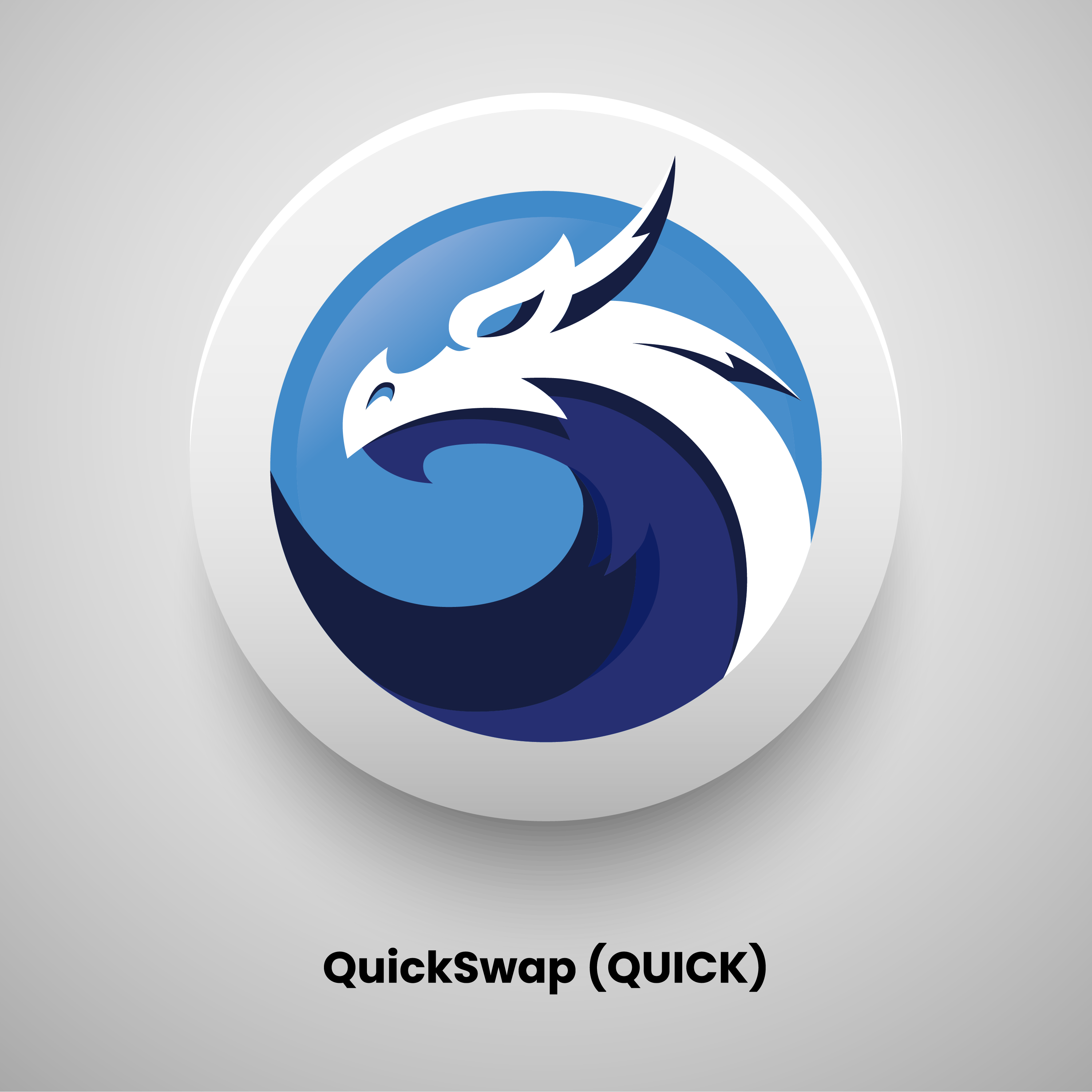What Is a QuickSwap Crypto Exchange?

The rise of decentralised finance (DeFi) has brought many financial products to the market with many advantages over traditional models. However, the cornerstone of DeFi has always been decentralised exchanges, eliminating intermediaries and lowering fees in a trustless way. But the problem with DEXs was always the question of how to provide liquidity and fill in the order book for fast transaction times with low slippage.
This is why the Automated Market Maker model has been implemented as a liquidity pool rather than relying on a matchmaking system. The AMM model was initially introduced by Vitalik Buterin in 2017 and was later implemented by Kyber Network and cemented by the likes of Uniswap, which lets users establish and run liquidity pools.
Uniswap, the Ethereum-based DEX, has established market dominance in terms of DEX volume, and its governance token UNI has one of the highest market caps of all the DeFi tokens.
But having transactions running on-chain also brings a lot of problems. This is especially evident in times of high volume when the network may get clustered, which results in increased fees and processing time.
We have seen some layer 2 (L2) solutions for scalability that are aimed at solving these issues. Polygon is currently the most notable of these and has the highest market cap. It is only logical that the next step in DeFi is for decentralised exchanges to be built natively on L2. The QuickSwap crypto exchange is just that; a decentralised exchange running on the Polygon network. In this FXOpen research post, we will cover this in more detail.
What Is Polygon (MATIC)?
The Polygon network, previously known as Matic, is a scaling solution that interconnects blockchains in the Ethereum ecosystem via sidechains and is what’s known as a layer 2 scaling solution.
Designed to be Ethereum Virtual Machine compatible, the higher transaction speed can be achieved with low and reliable fees which are necessary to conduct DeFi operations.
The Polygon Network is the official sidechain working on a Proof-of-Stake consensus mechanism, using its native MATIC token to secure the blockchain by staking it. MATIC is also used for paying fees in the Polygon ecosystem.
QuickSwap: How To Use It
So, what is QuickSwap exchange, and how does it fit into all of this? QuickSwap is a fork of the Uniswap decentralised exchange with all of its features and models, like the AMM and liquidity pools.
Being made on the Polygon network means users can migrate any ERC-20 tokens from Ethereum to Polygon through a bridge and convert them into another token on the QuickSwap exchange. The only condition is that there is a liquidity pool for the token pair, but due to its decentralised nature and accessibility, anyone can provide liquidity and start a liquidity pool (LP).
Users start a liquidity pool by first depositing a pair of tokens, and in return, they receive an LP token that is redeemable for the pool share, acting as a receipt. When the LP provider claims their token share, the LP tokens are burned.
They are rewarded for providing liquidity with the 0.3% fee QuickSwap charges for the token conversion, shared in proportion to the pool contribution.
How QuickSwap Works
Instead of the token price being determined by the order book, it uses a formula called Constant Product Market Maker, which is expressed as x * y = k
For example, if we are talking about the ETH/DAI pair, the ETH is x, and DAI is y. By multiplying those, we come up with a constant of k, which doesn’t change.
Imagine that the conversion rate offered by the liquidity pool is 1335 DAI (y) for 1 ETH (x). This means that if you supply the pool with 1335 DAI and take 1 ETH out, the price of ETH rises since the k is constant, and the supply of DAI is now greater than ETH.
How to Stake QuickSwap
The QUICK token is that platform's governance token that can also be used for staking in the Dragon’s Lair. This enables you to earn a yield on your QUICK holdings by receiving a deflationary token dQUICK.
When you stake your QUICK, you receive the corresponding amount of dQUICK tokens in your wallet. After you withdraw the dQUICK tokens, they are burned, and you receive your original QUICK tokens plus the rewards for the staking period.
Start Cryptocurrency CFD Trading
Cryptocurrency trading* can be done in a more simplistic manner. Here at FXOpen, we provide a wide range of crypto CFD pairs that you can start trading with right away. All you need to do is open an account, and you are on your way without having to connect wallets, learn about liquidity pools, or rely on APYs. The TickTrader platform will allow you to trade cryptocurrencies in a user-friendly interface with well-known technical tools.
*At FXOpen UK, Cryptocurrency CFDs are only available for trading by those clients categorised as Professional clients under FCA Rules. They are not available for trading by Retail clients.
Read more: https://fxopen.com/blog/en/what-is-a-quickswap-crypto-exchange/
Text source: Forex Trading Blog










